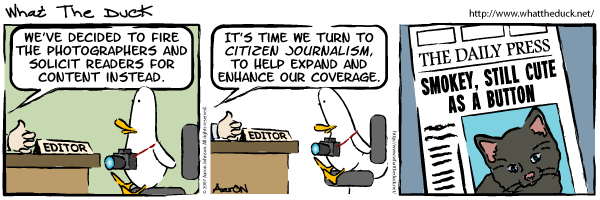Infographics class
The infographics class given by Andrew Long on Saturday was fascinating. Infographics is far more than just adding some pretty elements or charts to a story, it is visual reporting and art combined. Unlike the days when papers just had art departments who were given an assignment to create a picture to go with an existing story, Long is actually a reporter, and must tell a story in a way that the reader understands, and use the elements that the story requires, not just the ones he feels like using. He must abide by all the rules of journalism ethics, including checking his facts and talking to sources. One interesting point he made was that in today's journalistic world, work is often done in teams, so he credits contributors as well as sources, and he has to be careful about visual plagiarism and copyright laws. Long said that an infographics reporter must find new ways of telling stories, and that applies to his web work as well as his print work. One major purpose of infographics is to show what the human eye can't easily see. One way is to show an enlarged cutaway of something, like representing a knee surgery by showing an enlargement of the muscles. There can be infographics gone wrong--either facts weren't checked or, because we share a common visual language, the form doesn't represent what the graphic is supposed to, or the graphic has so many extraneous elements (noise) that its meaning is unclear. Like other reporters, Long has to work on deadline. He has to find the story within the facts and somehow portray that story visually, which is very difficult if the story is emotional rather than just factual. Though he does use charts, maps, and graphs, he has to decide what type they will be and for what purpose--will they represent chronological information showing change over time? Will they show spatial relationships or perspectives? He does try to make everything he does visually appealing, but clarity and truth are more important. Long uses a variety of tools, from Google Earth to ArcInfo to 3d modeling to just sketching. Technology has changed the way newspapers use and see the role of the artist. Humans first began to tell their stories visually and are doing so again. The rule is to show, rather than tell. One example he showed us was very compelling--4 pictures of the govenor, dated 2003-2006, with different sized bubbles around her representing the number of times she addressed certain issues in her speeches. In 2003, for example, the bubble with the word 'education' was very big and 'immigration' very small. In 2006, the sizes were reversed. Mr. Long gave us an assignment in class--to visually tell a story about the Grand Canyon Skywalk. We first had to decide on the story. The quantitative elements (i.e. how much weight can it hold) were only facts--we had to make a real, human story--and then represent it using almost no words. It was hard!! Some of his pointers that would be helpful for any visual reporting are to create a library of images and a list of experts. Also he said the Republic doesn't use Wikipedia as a direct source, but double checks the information with experts. Here are some links he gave the class:
snd.org
newsartists.org
He also has made some great stuff for the web, which you can see by going to AZ Central and looking for Sunscard and municipal indicators.



No comments:
Post a Comment